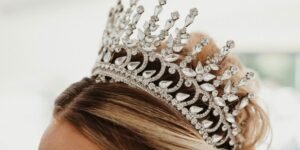Lipstick, often viewed as just a cosmetic product, holds a profound significance that goes far beyond mere aesthetics. From its rich historical origins to its role in personal expression today, lipstick has become an iconic symbol of beauty, power, and identity. This article delves into the colorful history of lipstick, its cultural symbolism, the science behind its formulation, and its impact on personal style and identity.
What Is the Colorful History of Lipstick?
The origins of lip color trace back thousands of years. In ancient civilizations such as Egypt, both men and women used pigments to decorate their lips, signifying beauty, social status, and even spiritual beliefs. Cleopatra famously used crushed beetles to create a deep red lip stain, symbolizing power and royalty. The use of lip color wasn’t limited to Egypt; the Greeks and Romans also adorned their lips with pigments derived from plants and minerals.
Throughout history, lipstick’s meaning has evolved. In the 18th century, European women used lip color to display wealth and beauty, as pigments were expensive and reserved for the elite. However, in the 20th century, lipstick became more democratic, with mass production allowing women from all walks of life to access the product. The rise of Hollywood glamour in the 1920s cemented lipstick as a tool for feminine allure and sophistication.
How Has Lipstick Become a Cultural Symbol?
Lipstick has held many symbolic meanings across various cultures and eras. Traditionally, it has been seen as a symbol of femininity and beauty, with red lipstick, in particular, associated with power, sexuality, and confidence. From the bold lips of 1920s flappers to the glamour of Marilyn Monroe in the 1950s, lipstick has been used to evoke a sense of boldness and independence.
However, lipstick’s symbolism goes beyond beauty. It has also been a tool of rebellion and resistance. During wartime, women used lipstick as a form of empowerment, asserting their strength and presence in a world dominated by men. The feminist movements of the 1960s and 70s also adopted lipstick as a statement of defiance against traditional beauty norms, as women claimed ownership over their own bodies and appearances.
Interestingly, lipstick has also been associated with mourning and respect in certain cultures. In some parts of the world, dark-colored lipsticks are worn during periods of grief, signifying strength and resilience.
What’s Behind the Science of Lipstick Formulation?
Creating the perfect lipstick requires an intricate balance of ingredients, formulation processes, and a keen understanding of texture, color, and longevity. The primary components of lipstick include waxes, oils, pigments, and sometimes emulsifiers. Waxes like beeswax and candelilla wax give lipsticks their structure and help them stay in place. Oils, such as castor oil or jojoba oil, provide hydration and give the lipstick its smooth application.
Pigments are what give lipstick its color, ranging from natural mineral pigments to synthetic dyes. The type of pigment used will affect the opacity and vibrancy of the color. Different formulations—whether bullet lipsticks, liquid mattes, or lip stains—require varying amounts of these ingredients to achieve the desired finish.
For example, matte lipsticks often use more wax and less oil, giving them a long-lasting, non-shiny finish, while glossy formulations rely on higher oil content for that slick, shiny appearance. Advances in technology have also led to the creation of long-wear formulas that promise to stay on for hours without fading.
How Does Lipstick Reflect Personal Expression and Identity?
For many individuals, lipstick is a powerful tool for self-expression. The shade of lipstick someone chooses can reflect their mood, style, and even their personality. Bold reds might suggest confidence and power, while soft pinks can convey a more approachable and feminine aesthetic. The way lipstick is applied can also send a message—overlined lips might make a statement of glamour or even defiance, while a natural, subtle application might suggest a more minimalist approach.
Lipstick also plays a significant role in enhancing one’s natural features. Many people use it to complement their overall makeup, drawing attention to their lips and enhancing their facial features. This practice allows individuals to feel empowered, confident, and in control of their image.
Interestingly, lipstick also plays a role in shaping our identities, both individually and socially. It can be a marker of cultural belonging or a way to align oneself with a particular group or aesthetic. For example, individuals who embrace retro fashion might gravitate toward vintage red lipstick, while those who follow current trends may prefer more experimental shades like deep purples or metallic finishes.
How Does Lipstick Influence the Beauty Industry and Trends?
The beauty industry has made lipstick a central pillar of its marketing and product offerings. From the early 20th century to today, lipstick has undergone constant innovation in terms of color, texture, and formulation. Celebrity endorsements and collaborations with famous makeup artists have made lipstick an essential beauty product in the modern world.
In the 21st century, trends around lipstick have evolved significantly. The rise of social media has created a platform for influencers and beauty gurus to showcase new lipstick colors and application techniques. Matte lipstick, for example, rose to massive popularity due to influencers, while glossy, tinted formulas have become a trend with younger audiences.
Seasonal collections, limited-edition shades, and celebrity-designed lipsticks have made lipstick a key part of personal branding, with consumers eagerly purchasing new shades to stay on-trend.
What Impact Does Lipstick Have Beyond the Surface?
Lipstick is not only a beauty product but also a tool of empowerment and a driver of economic growth. Historically, lipstick has been linked to women’s empowerment, serving as an emblem of independence, confidence, and social presence. The act of wearing lipstick, for many, is an expression of taking control of their own appearance and embracing their femininity.
The lipstick industry also has significant social and economic impact. It plays a crucial role in the global beauty market, generating billions of dollars annually. As awareness of environmental concerns grows, the beauty industry has also started to adapt by producing more eco-friendly lipstick options, including those made with sustainable ingredients and packaging.
Moreover, lipstick continues to challenge beauty standards, allowing people to redefine what beauty means on their terms. By making lipstick more accessible and inclusive, the beauty industry has opened the door for people of all genders, ethnicities, and ages to find shades that empower them.
Lipstick’s Multifaceted Legacy
Lipstick is far more than a simple cosmetic. Throughout history, it has been a symbol of power, rebellion, femininity, and personal expression. As the beauty industry continues to innovate, lipstick remains a central figure in how we define beauty, identity, and culture. It serves as a reminder that beauty products, no matter how small, have the power to shape societal norms and personal identities, leaving a lasting impact on the world.








